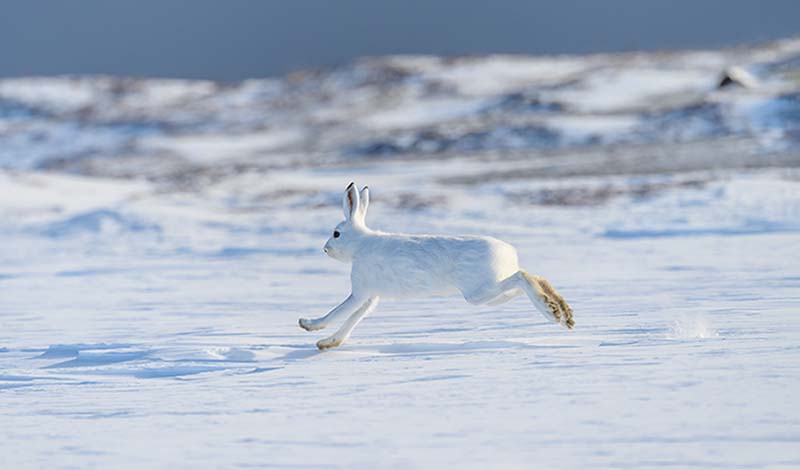1.5-minute read
Whales, wolves, and wildebeest do it. Butterflies, bats, and birds do it. What do they do? Migrate—traveling hundreds and sometimes thousands of miles every year to secure food, water, and family-friendly habitat. While some animals have the natural capacity for long-distance movement, Arctic hares are not known to travel far afield. Despite what may seem like a big-footed advantage, the hopping herbivores typically shift their seasonal location by less than six miles. But in the autumn of 2019, one determined female decided to cover new ground and go the distance—and go, go, go she did.
According to Canadian researchers tracking the movements of 25 Arctic hares, the lone ranger known as BBYY traveled 241 miles over 49 days—the longest recorded journey for her species. Because traveling great distances requires a lot of energy, staying local increases the odds of survival in smaller land animals like rabbits and hares. So, what compelled BBYY to thump across the tundra and boldly go where no hare had gone before? Scientists studying the movement of the Arctic animals conjecture that the intrepid hopper may have been motivated to go those extra miles by the slightly warmer microclimate and more abundant plant life at her lakeside destination.
And why on Earth does Arctic hare mobility matter? Like conservationists tracking the movements of elephants in Africa, researchers are keeping tabs on when, where, and why Arctic critters move. Understanding how the animals adapt to environmental change and what it will take to keep northern food webs and ecosystems healthy and functioning will benefit both people and wildlife in a warming world.
In case you were wondering, FYCI (For Your Creature Information), hares and rabbits are two different kinds of hoppers. Rabbits are typically smaller, have shorter ears and legs than hares, and are born without fur. A group of hares is known as a down, a band, a husk, or a warren, and a group of wild rabbits is known as a colony or a… fluffle. No, not making it up—fluffle. And that’s our perfectly soothing word of the week. Fluffle on, fellow travelers!




















































